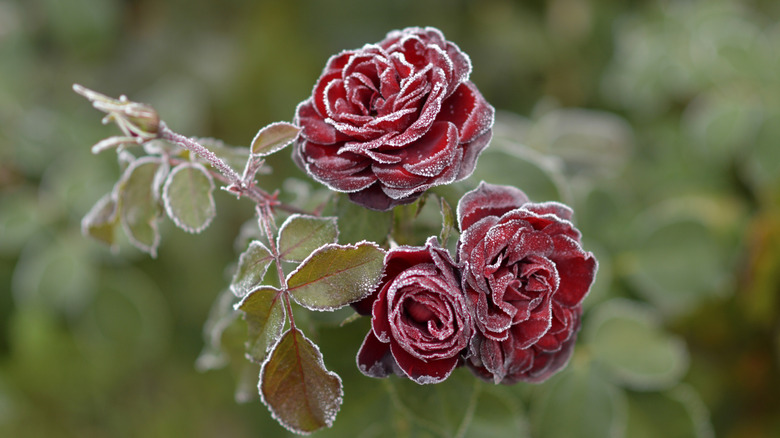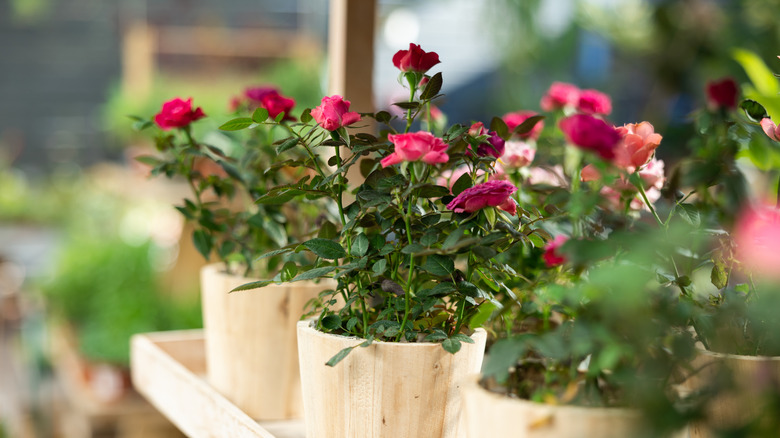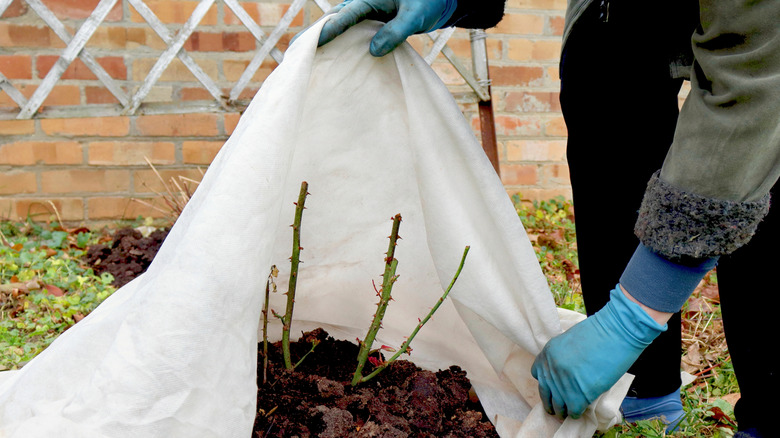Protect Your Roses From Frost With These Helpful Tips
As you prepare your garden for the colder seasons, it's important to know that each plant may require different frost-protection strategies. While some plants can be easily brought inside, such as those that are small or planted in containers, those that stay outdoors might require more care, like ground-planted roses. Depending on what species of rose you have, as well as your garden's climate, you may need to take a few extra steps when safeguarding your plants. Some methods include adding cane support, mounding the soil, and wrapping the plant with a protective material like burlap or straw.
It's important to take note of what USDA Hardiness Zone you reside in, as this will affect how you will safeguard your roses during the winter. If you live in zones three through six, you will need to take extra care to cover your roses during the colder months. If you live in these zones and would like to plant roses for the next year, know that there are cold-hardy rose species that can thrive in your colder climate. Roses planted in zones seven through nine will also require some protection, while zones 10 and 11 are much more likely to survive without much intervention.
When to bring potted roses inside for the winter
Generally, the rule of thumb is that if a potted species of rose is hardy to at least two zones below your garden's zone, then it should be able to survive outdoors in the winter. Otherwise, you'll want to bring them inside. Since potted plant roots are more exposed, they have a higher risk of freezing and drying out, especially in the lower zones.
Before bringing your potted roses indoors for the season, make sure to let them go completely dormant. This means waiting until the plant has lost its leaves from the first bout of cold. Make sure to take off any leaves that may remain before moving indoors. You can keep your potted roses protected from frost by storing them in a garage or shed, somewhere sheltered and unheated. These flowers will require very little watering over the winter — just enough to keep them from drying out. This means watering them only a few times a month. If you don't have the space or ability to house your roses indoors, you will have to take extra precautions to overwinter them outdoors.
How to protect outdoor roses from frost
Whether your roses are planted in the ground or you are unable to house them indoors, there are several tactics you can use to protect them from the cold, depending on what type of rose you are growing. Make sure to stop adding fertilizer to the soil at least six weeks before the first frost. During the fall, you can prune your rose bush to remove any dead or dying canes; however, too much pruning will promote new growth, so be cautious.
When overwintering ground-planted roses, add about 6 to 12 inches of compost, potting mix, or mulch around the base of the plant to ensure it stays warm and moist. If you live in a climate with heavy winds, secure your rose canes together with twine. For extra protection, you can build a wire cylinder cage around your rose bush, ensuring it's tall enough to enclose the entire plant. Then, fill the cage with mulch material like leaves, straw, or peat moss. To keep the material in place, add a piece of burlap over the open top and secure it to the cage.
When preparing your potted roses for winter outdoors, you can similarly add an organic material like mulch to the base and wrap the plant in a protective material like burlap. If you can, move the plants to an outdoor spot with wind protection, like under a porch roof or against a wall. To protect the roses from freezing, keep the plant a few inches off the ground using bricks or another sturdy object.


